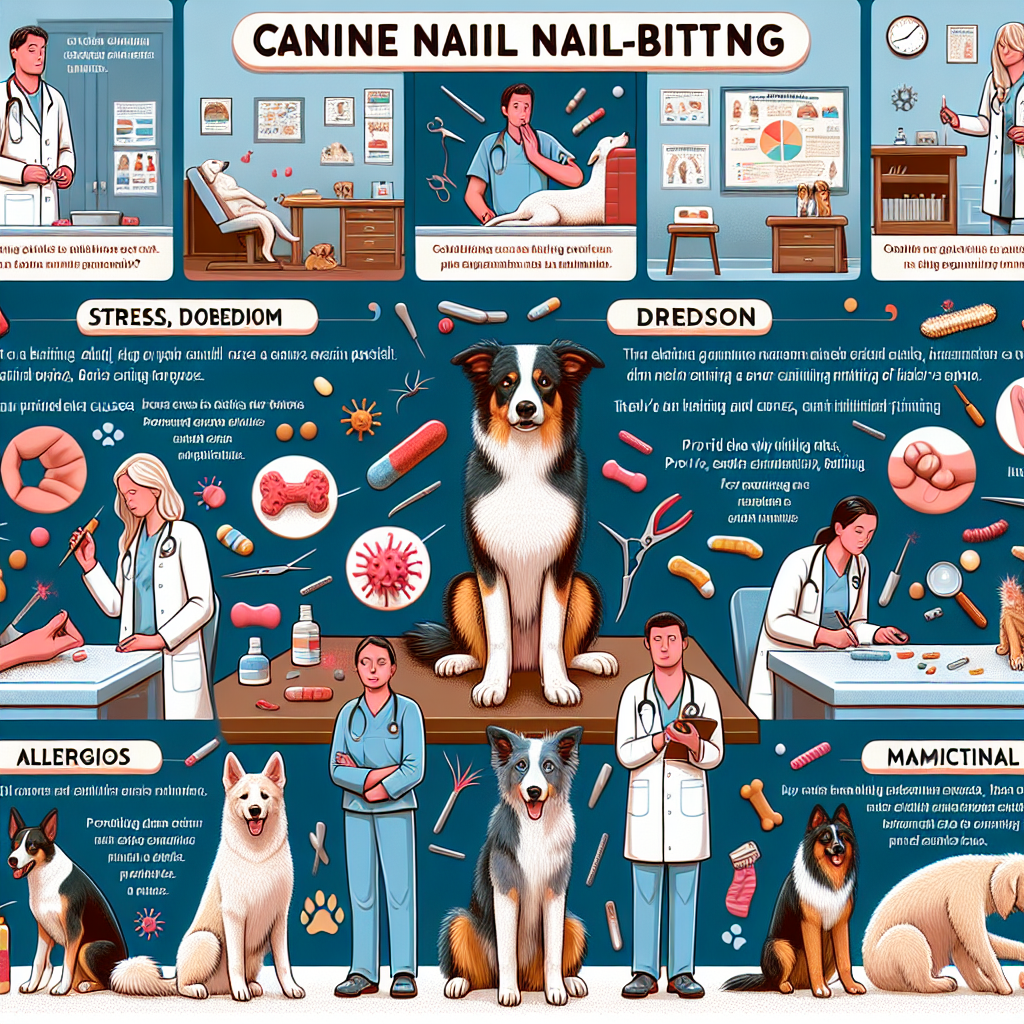===INTRO:===
Understanding canine nail-biting is essential for pet owners who want to ensure their dog’s well-being. Nail-biting not only affects a dog’s comfort but can lead to severe health issues if left unaddressed. If you’ve noticed your furry friend obsessively gnawing at their paws, you are not alone. This behavior can stem from various underlying reasons, turning a seemingly harmless habit into a concerning issue. In this article, we will delve deep into the causes behind canine nail-biting and explore effective strategies to curb this behavior, ensuring a happier, healthier life for your pet.
Exploring the Underlying Causes of Nail-Biting in Dogs
Understanding the motivations behind canine nail-biting is crucial for addressing the behavior effectively. One primary reason dogs may engage in this habit is anxiety. Dogs experience stress in various forms, whether due to environmental changes, separation from their owners, or loud noises. This anxiety can manifest physically through destructive behaviors, including nail-biting. In such cases, the action becomes a coping mechanism, allowing the dog to relieve stress, albeit temporarily.
Another significant factor contributing to nail-biting is boredom. Dogs require physical and mental stimulation to thrive. Without adequate exercise or interactive engagement, they may resort to self-grooming as a means of releasing pent-up energy. This behavior can become a repetitive cycle, where boredom leads to nail-biting, further exacerbating the dog’s emotional state. Thus, it’s vital to examine your dog’s daily routine and activities to determine whether boredom is a contributing factor.
Lastly, underlying medical issues can also lead to nail-biting. In some instances, a dog may be experiencing pain or discomfort in their paws due to injuries, allergies, or skin irritations. This discomfort could compel them to lick or bite at their nails in an attempt to alleviate their pain. Regular vet check-ups are essential in identifying such health concerns early, ensuring they receive the care necessary to prevent further complicating their habits.
Effective Solutions to Address Canine Nail-Biting Behaviors
Once you comprehend the motivations behind nail-biting, you can effectively address the behavior with targeted strategies. First and foremost, creating a structured routine can significantly impact your dog’s behavior. Incorporating consistent exercise sessions, interactive playtime, and mental stimulation through training will help alleviate boredom and anxiety. Engaging your dog in different activities, such as agility training or scent games, can channel their energy constructively, reducing the urge to bite their nails.
Another practical approach is providing a comforting environment. Ensuring that your dog has a safe space can ease their anxiety significantly. Consider investing in calming products such as anxiety wraps, pheromone diffusers, or comfort toys. These items can help your dog feel more secure and less inclined to engage in harmful habits. Moreover, establishing a calm pre-bedtime routine can also prepare your dog for rest, reducing nighttime anxiety that may lead to nail-biting.
Lastly, if behavioral strategies are insufficient, consulting with a professional dog trainer or a veterinarian may be necessary. They can assess your dog’s specific situation and recommend tailored training techniques or behavioral therapies. In some cases, they might suggest temporary medication to help manage anxiety while you work on reducing nail-biting behaviors through alternative methods. By addressing the issue holistically and seeking expert guidance, you can restore your dog’s peace of mind and overall health.
===OUTRO:===
In conclusion, understanding canine nail-biting requires a multifaceted approach encompassing behavioral, environmental, and medical considerations. By identifying the root causes and implementing tailored strategies, you can alleviate your dog’s distress and curb nail-biting behaviors effectively. Always remember, your engagement and commitment play a vital role in your dog’s happiness and health. If you find that the strategies outlined here are not yielding the desired results, don’t hesitate to reach out to a professional for further guidance. Your dog’s well-being is a priority, and with the right tools and support, you can foster an environment where your furry companion thrives.
Measuring Your Dog’s Height: A Comprehensive GuideUnderstanding How Dogs Become Infested with FleasUnderstanding the Lifespan of Pug Dogs: What to ExpectRelevant LinkRelevant LinkRelevant Link
